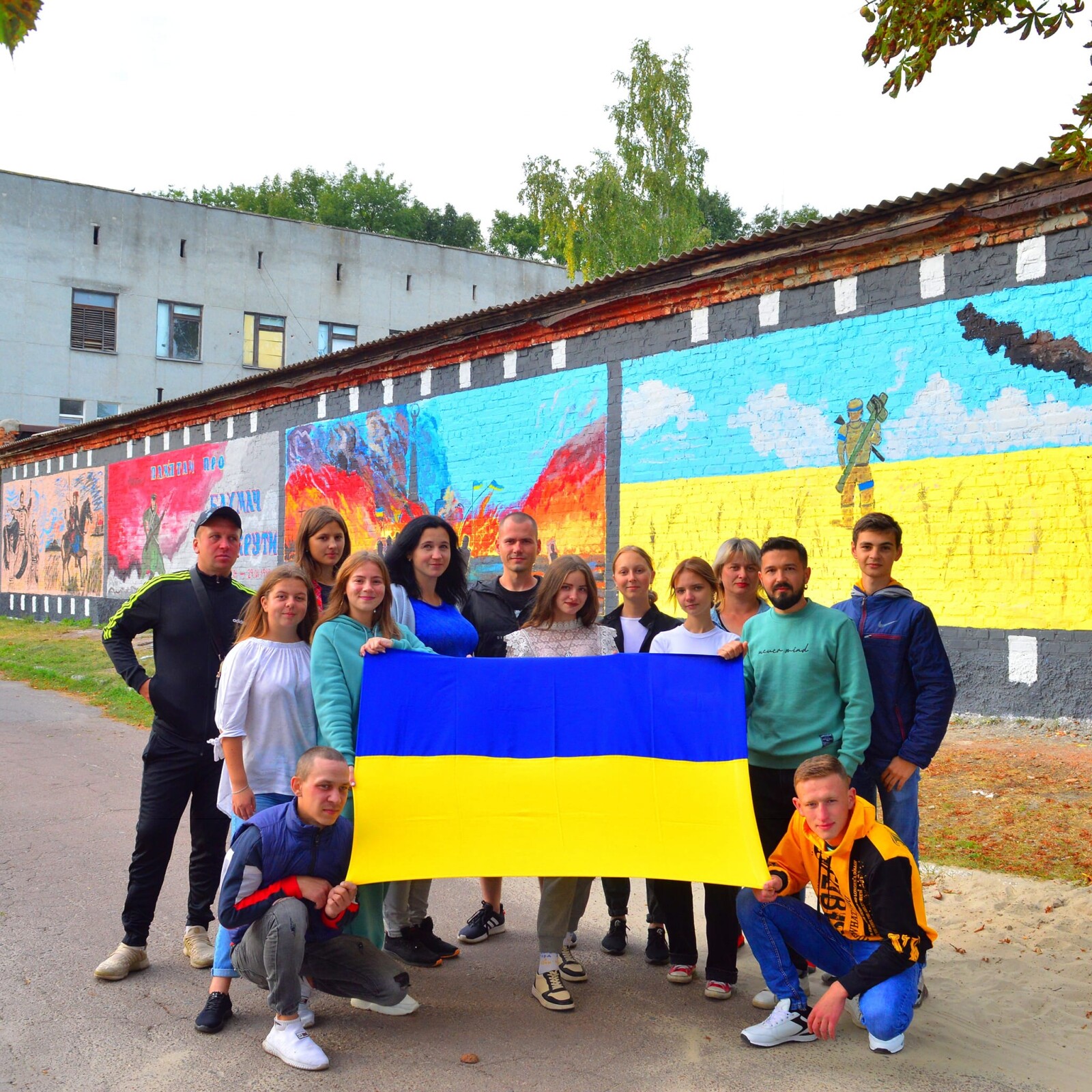“The experience of war brought young people closer together,” says Nataliya Drozd, who leads the Dobrochyn Centre, an NGO that works with young people in the Chernihiv region, a northern Ukraine region bordering both Russia and Belarus.
One of the centre’s key projects combines democracy and youth empowerment, helping young people have a greater say in their communities. This initiative, supported by EED, trains youth in rural areas to become local changemakers.
Russia’s full-scale invasion put a temporary halt to this work, as a large part of the Chernihiv region was under occupation from February until April of 2022. For more than a month, locals lived disconnected from the rest of the world in constant fear for their lives.
Nataliya explains that when Ukrainian forces regained control of the region, the young people she works with were determined than ever to continue this community work.
“During the occupation, they learned how to self-organise in extreme conditions,” Nataliya explains. “This horizontal networking was crucial for the entire Chernihiv region as people lived without an internet connection. After that horror, they wanted to do even more work than before.”
Now, five youth-led groups are working on projects helping vulnerable people, and they are helping to rebuild and restore their communities.
“Young people chose to stay in their home region after the occupation,” Nataliya says, “They believe in what they are doing. Local civil society and government know that it is vital to engage with young people, and that this is an important part of ensuring they continue to live in our region, and also an important part of ensuring we are not occupied again.”
Working locally for the locals
EED began supporting Dobrochyn with a youth project a year before the full-scale invasion. The NGO selected five motivated groups of young people from around the region, all with less than 20,000 residents, and four of them on the border with Russia and Belarus.
“Very often the approach is to give young people some training and then they are left on their own,” Nataliya explains. “We wanted to go further.”
She and her team made sure to meet with both local governments and youth representatives before launching the project. They got a sense of what each community needed and established trust.
“We expanded the level of communication between local government and youth making it systematic and better organised,” she says. “Before the full-scale war, we created youth councils in all these communities, and we had announced a call for mini grants for their projects.”
The full-scale invasion interrupted these plans, and most participants were soon living under occupation. Nataliya and her colleagues stayed in Chernihiv despite the constant shelling and continued to provide financial support to those in need. At the end of March 2022, the team were forced to evacuate to western Ukraine, but they returned to home in May.
“When we met with young people on our return, we realised that they wanted to continue what we had started before the invasion, and we renewed our call for grants,” says Nataliya.
Each youth group has now implemented projects which made sense for their community.
Youth from Horodnya, a town near both the Russian and Belarusian borders, created a mobile Freedom Hub and launched a Kindness Marathon.
“We bought them laptops and other computer equipment, and they began travelling to the nearby villages to help seniors there,” Nataliya explains, “For example, young people would order medicines or pay communal fees of older residents who find this challenging.”
Another community in Dobryanka, also on the border, painted a huge blue-and-yellow mural and installed a park with a playground and recreational area. Other groups organised sports events and established gathering spaces for active locals.
“Young people from Ripky were even inducted in Ukraine’s book of records for their project,” Nataliya smiles. “They came up with an idea to fry the most pancakes to raise funds for the Ukrainian army.”
Investing in the future
Months after the liberation, all the youth communities remain active.
“Thanks to EED’s support, we taught them how to launch successful projects,” she says. “They got the opportunity to feel responsible for their lives and their communities, and to do something concrete. They gained confidence and practical experience.”
“Young people are volunteering, fundraising, and organising events. They did that initially thanks to the EED’s support, but now they are continuing this work independently and into the future.”
She believes that it is crucial to involve youth in Ukraine’s reconstruction today if they are to own future transformations. These activities also help young people deal with the emotional burnout from the war.
“Young people need to be constantly engaged,” Nataliya explains. “We must train them for future leadership roles, so we can have great activists and organisers later on.”
As Nataliya points out, many local authorities are already involving young people in a systematic way. In these communities, they are generating change and realising their potential.
“Local communities do not expect the state to decide everything for them,” she says. “We want youth to plan for themselves, so we work with them, and not instead of them. We believe that young people can improve our country, and we need smart support to ensure that.”
Nataliya believes that local civil society groups are strong and share a clear vision on how they want to rebuild Ukraine. The key is to let locals determine their needs and priorities, so the state and international allies continue supporting this work.
“We wanted to develop quality infrastructure to involve youth with community life, and we have achieved that,” she says.
This article reflects the views of the grantee featured and does not necessarily represent the official opinion of the European Endowment for Democracy, the European Commission or any other European State or other contributors to EED.
